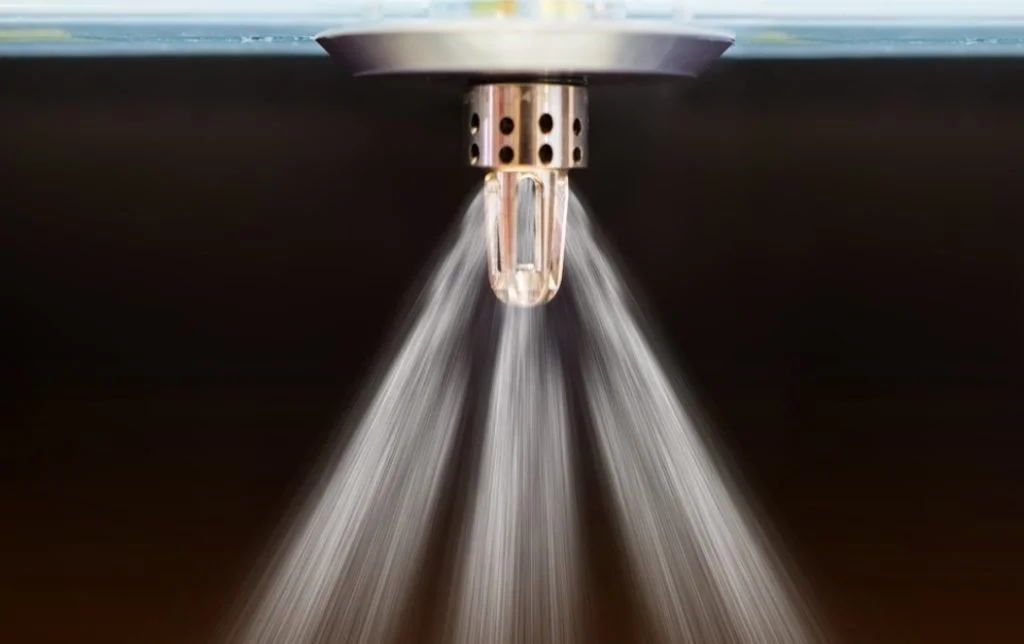Residential fire protection services, including sprinklers and mist systems, offer crucial protection for homes and their occupants, with each type having distinct advantages and considerations. Traditional sprinkler systems require substantial water volumes, while high-pressure mist systems have emerged as an alternative, utilizing significantly less water to combat fires effectively.
Home Fire Response Guide
When faced with a fire in the home, it’s crucial to prioritize safety and follow proper procedures. The first and most important step is to ensure everyone in the household evacuates immediately and calls emergency services. Fire safety experts strongly advise against attempting to tackle large fires yourself, as this can be extremely dangerous and potentially life-threatening.
For small, contained fires, having the right equipment and knowledge can make a significant difference. Domestic fire extinguishers are essential tools for addressing minor fire incidents in the home. Different types of fire extinguishers are designed to combat specific fire classes:
- Water extinguishers: Suitable for fires involving solid materials like wood, paper, and textiles.
- Foam extinguishers: Effective against flammable liquids and some solid material fires.
- Powder extinguishers: Versatile and can be used on most fire types, including electrical fires.
- CO2 extinguishers: Ideal for electrical fires and flammable liquids.
A multi-purpose fire extinguisher, such as a water mist extinguisher, can be an excellent choice for home use as it can tackle various fire types, including those involving gas fires and open solid fuel fires.
When using a fire extinguisher, remember the PASS technique:
- Pull the pin
- Aim at the base of the fire
- Squeeze the handle
- Sweep from side to side
It’s important to note that fire extinguishers should only be used on small, contained fires, and only after ensuring that everyone has evacuated and the fire department has been notified.
In addition to fire extinguishers, fire blankets can be useful for smothering small fires or wrapping around a person whose clothes have caught fire. These should be kept in easily accessible locations, particularly in kitchens where cooking-related fires are common.
To enhance home fire safety:
- Install smoke alarms on every level of your home and test them regularly.
- Keep doors closed while sleeping to slow the spread of fire and smoke.
- Create and practice a fire escape plan with all household members.
- Store important documents in a fire-resistant safe or create digital copies.
While having the right equipment is important, prevention is key. Regular maintenance of electrical systems, proper storage of flammable materials, and vigilance while cooking can significantly reduce the risk of home fires. In the event of a fire that cannot be quickly and safely contained, the priority should always be to evacuate immediately and let professional firefighters handle the situation.
Wet vs. Dry Sprinkler Systems
Wet and dry sprinkler systems are two primary types of fire suppression systems used in buildings, each with distinct characteristics and applications. Wet systems are the most common and simplest type, containing water under pressure at all times. In contrast, dry systems use pressurized air or nitrogen in the pipes, with water held back by a special valve.
Advantages of Wet Sprinkler Systems
- Quick response: Water is immediately discharged when a sprinkler head activates, ensuring rapid fire suppression.
- Cost-effective: Generally less expensive to install and maintain due to their simpler design.
- Reliability: With fewer mechanical components, wet systems have a lower risk of malfunction.
- Low maintenance: The simple design requires less frequent inspections and servicing.
However, wet systems are not suitable for all environments:
- Freezing risk: They cannot be used in areas where temperatures may drop below freezing, as this could cause pipes to burst.
- Water damage: A leak in the system could potentially cause water damage to the building and its contents.
Advantages of Dry Sprinkler Systems
Dry sprinkler systems, while less common, have specific advantages:
- Freeze protection: Ideal for unheated areas or regions with cold climates, as the pipes contain pressurized air instead of water.
- Specialized applications: Suitable for protecting valuable items that could be damaged by accidental water discharge.
- Controlled water release: The dry pipe valve prevents water from entering the pipes until a sprinkler activates, reducing the risk of accidental discharge.
Drawbacks of dry systems include:
- Slower response: There is a slight delay in water discharge as the air must first be expelled from the pipes.
- Higher complexity: The additional components make installation and maintenance more complex and costly.
- Increased corrosion risk: Residual moisture in the pipes can lead to internal corrosion over time.
The choice between wet and dry sprinkler systems depends on factors such as building layout, climate conditions, and the nature of the protected assets. In many cases, buildings may utilize a combination of both systems to provide comprehensive fire protection tailored to specific areas and requirements.
High-Pressure Mist System Benefits
High-pressure mist systems offer several distinct advantages over traditional sprinkler systems for fire suppression, particularly in residential settings. These systems utilize significantly less water than conventional sprinklers, typically using up to 80% less water while effectively suppressing fires. This reduction in water usage translates to minimal water damage to property and belongings during activation.
The effectiveness of high-pressure mist systems stems from their unique approach to fire suppression. When discharged, the water is atomized into very fine droplets, creating a mist that fights fires on multiple fronts:
- Cooling: The tiny water droplets rapidly absorb heat, dramatically reducing room temperature and preventing re-ignition.
- Oxygen displacement: The mist expands upon contact with heat, displacing oxygen and starving the fire.
- Surface wetting: Despite using less water, the mist effectively drenches surfaces, preventing fire spread.
High-pressure mist systems are particularly beneficial in residential applications due to their efficient design and installation process. These systems are often less expensive than traditional sprinklers and require minimal effort to install, saving both time and money for homeowners. The compact nature of the system components also makes them less intrusive in living spaces.
Another advantage of high-pressure mist systems is their durability and longevity. These systems can maintain mist quality even when extended over longer distances or when using numerous nozzles, making them adaptable to various home layouts. This flexibility, combined with their effectiveness and reduced water usage, makes high-pressure mist systems an increasingly popular choice for modern residential fire protection.
Addressable Fire Alarm Advantages
Addressable fire alarm systems offer significant advantages over conventional systems, particularly in larger buildings and complex environments. These advanced systems provide precise location information for each detector or device, allowing for faster response times and more efficient fire management.
Key Benefits of Addressable Systems
One of the key benefits of addressable systems is their ability to pinpoint the exact location of a fire or fault. Each device on the system has a unique address, enabling the control panel to identify which specific detector has been activated. This precise identification reduces response times and minimizes potential damage by allowing firefighters to quickly locate the source of the alarm.
Addressable systems also offer enhanced flexibility and scalability. They can accommodate a larger number of devices compared to conventional systems, making them ideal for expansive buildings or campuses. This scalability allows for easy system expansion as building needs change over time, without requiring a complete overhaul of the existing infrastructure.
Maintenance and troubleshooting are significantly simplified with addressable systems. The control panel can provide detailed information about the status of each device, including battery life and contamination levels. This feature allows for proactive maintenance, reducing the likelihood of false alarms and system failures.
False alarm reduction is another notable advantage of addressable systems. Advanced algorithms and intelligent detectors can differentiate between actual fire conditions and environmental factors that might trigger false alarms. This capability not only improves overall system reliability but also reduces unnecessary evacuations and potential complacency among building occupants.
Addressable systems offer greater resilience against cable damage compared to conventional systems. They typically use loop wiring configurations, which allow the system to continue functioning even if a break occurs in the circuit. This redundancy ensures that the fire detection system remains operational in various scenarios, enhancing overall building safety.
The installation process for addressable systems can be more cost-effective, especially in larger buildings. While the initial equipment cost may be higher, the reduced wiring requirements and simplified installation process can lead to overall cost savings. Additionally, the long-term benefits of easier maintenance and system expansion often outweigh the initial investment.
Addressable fire alarm systems also offer advanced programming capabilities. System sensitivity can be adjusted based on time of day or specific building areas, allowing for customized protection that adapts to the building’s usage patterns. This level of control ensures optimal fire detection while minimizing disruptions to daily operations.
In summary, addressable fire alarm systems provide superior detection capabilities, simplified maintenance, increased safety features, and greater flexibility compared to conventional systems. These advantages make them an increasingly popular choice for modern buildings, particularly those with complex layouts or specific fire safety requirements.
Early Detection Systems
Smoke alarms and early warning systems are critical components of comprehensive fire protection strategies, offering vital early detection capabilities that can save lives and minimize property damage. These systems have evolved significantly, with advanced technologies now providing unprecedented levels of sensitivity and reliability.
Very Early Warning Fire Detection (VEWFD)
One of the most sophisticated early warning systems is the Very Early Warning Fire Detection (VEWFD) technology, exemplified by systems like VESDA (Very Early Smoke Detection Apparatus). VESDA systems utilize air sampling techniques to detect smoke particles at extremely low concentrations, often before they are visible to the human eye. This aspirating smoke detection technology continuously draws air samples through a network of pipes, passing them through highly sensitive optical detectors. The system can detect smoke at concentrations as low as 0.005% obscuration per meter, providing crucial extra time for investigation and intervention.
VEWFD systems offer multiple alarm levels, allowing for a staged response to potential fire threats. For instance, a typical VESDA system
may have three alarm stages: Alert, Action, and Fire. This graduated approach enables facility managers to investigate low-level alerts before they escalate, potentially averting false alarms or addressing small incidents before they become major emergencies.
Multi-Sensor Fire Alarms
The effectiveness of early warning systems extends beyond just smoke detection. Multi-sensor fire alarms combine different detection technologies to provide more comprehensive protection. These devices often incorporate both photoelectric smoke sensors and heat detectors, allowing them to respond to a wider range of fire types. Some advanced models even include gas sensors to detect carbon monoxide, further enhancing their ability to identify potential fire hazards in their earliest stages.
Early warning systems are particularly valuable in environments where rapid fire spread could be catastrophic, such as data centers, museums, or industrial facilities with sensitive equipment. In these settings, the ability to detect a fire in its incipient stages can mean the difference between a minor incident and a major disaster. The systems can be integrated with building management systems, allowing for automated responses such as shutting down equipment, activating suppression systems, or initiating evacuation procedures.
While these advanced systems offer superior protection, they should be part of a layered approach to fire safety. Conventional smoke alarms still play a crucial role, especially in residential settings. The U.S. National Fire Protection Association recommends installing smoke alarms inside every sleeping room, outside each separate sleeping area, and on every level of the home.
For optimal protection, fire safety experts recommend a combination of different detector types. Ionization smoke alarms are more responsive to flaming fires, while photoelectric alarms are better at detecting smoldering fires. Heat alarms, which respond to temperature increases, can be useful in areas where smoke detectors might produce false alarms, such as kitchens or garages.
Ultimately, the goal of smoke alarms and early warning systems is to provide occupants with as much time as possible to respond to a fire threat. Whether it’s a sophisticated VESDA system in a large commercial building or a network of interconnected smoke alarms in a family home, these devices play a crucial role in preserving life and property in the face of fire hazards.
Summary
Residential fire suppression systems and early detection systems are vital in minimizing the impact of fires on homes and buildings. Wet and dry sprinkler systems, along with high-pressure mist systems, provide tailored protection based on the unique requirements of different environments. Advanced addressable fire alarm systems offer precise detection and maintenance efficiencies, making them ideal for complex and large buildings. Early detection technologies, including VESDA and multi-sensor fire alarms, enhance fire safety by providing rapid response capabilities, especially in sensitive or high-risk areas. Combining these systems and adopting fire safety practices empowers homeowners and building managers to reduce fire risks effectively and protect lives and property.
Keep an eye for more news & updates on Essential Tribune!








